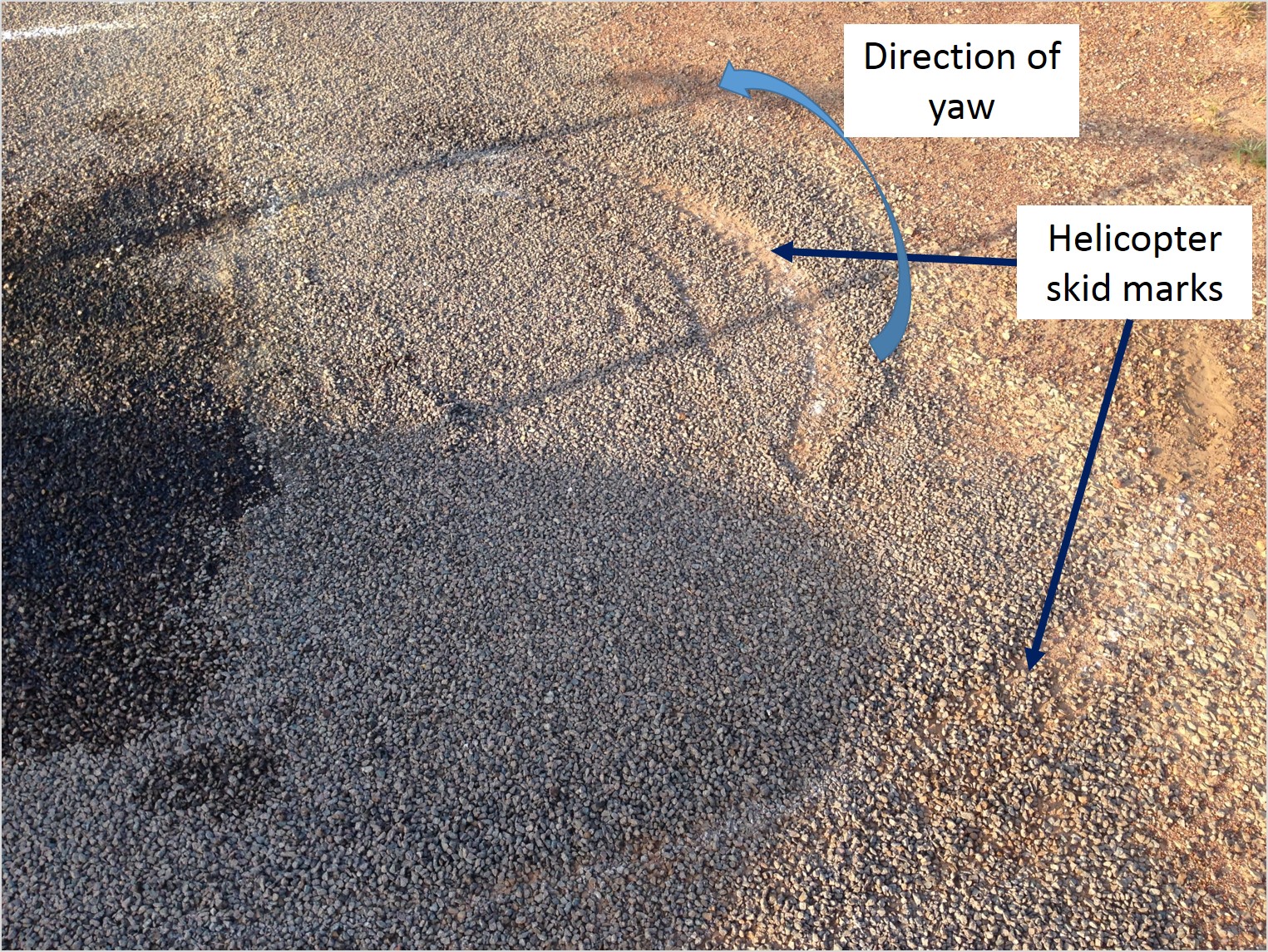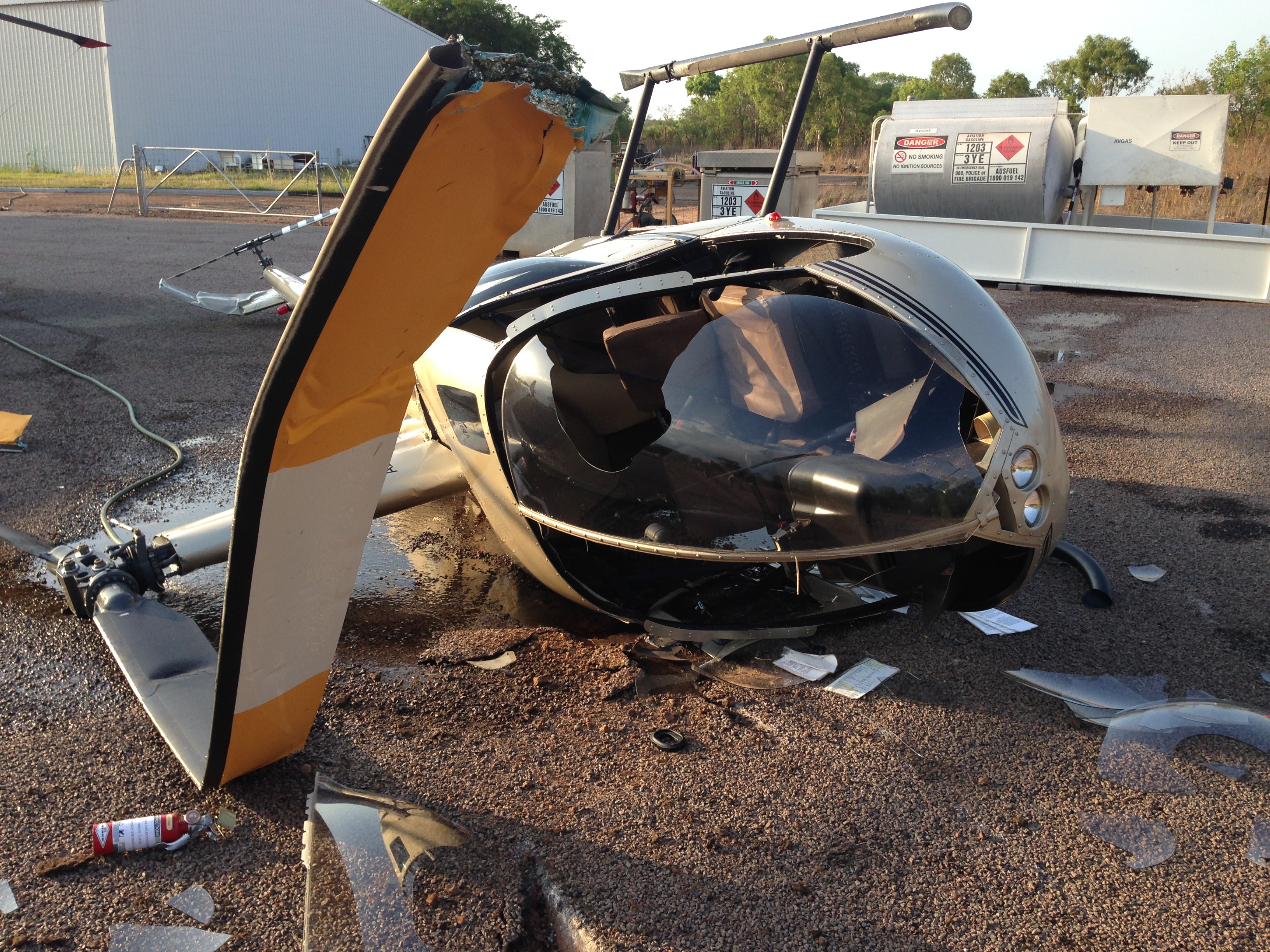What happened
Late in the afternoon of 7 October 2015, a pilot prepared the Robinson 44 helicopter, registered VH-ZWA (ZWA), for a solo training flight. The local flight from Darwin Airport, Northern Territory, was to consolidate the pilot’s knowledge of the local area, and become more familiar with the helicopter, as it was the pilot’s first day in a new job. Earlier in the day, the chief pilot had conducted an acceptance flight with the pilot in ZWA.
The pilot refuelled the helicopter and conducted a pre-flight inspection, before boarding, and completing the pre-start checklist.
The pilot then conducted the following engine start checklist from memory.
Engine start (main actions)
- engaged the starter until it fired
- engaged the clutch and turned the alternator on
- when the clutch light went out, increased the rotor RPM to 79%
- conducted a magneto check; and noted that all warning lights were out
- began to increase the rotor RPM toward 100% and turned the governor on
Just as the pilot was about to conduct the next checklist item, a low rotor horn check[1], the pilot reported that the helicopter yawed slightly to the left. The pilot quickly checked that the pedals were neutral and put some ‘weight’ on the collective to confirm that it was fully down.
However, the helicopter continued to yaw left rapidly, through about 90° (Figure 1). The pilot applied full right pedal but the helicopter did not respond and continued the yaw, through about 180°, before falling onto its right side. The pilot, who sustained minor injuries, quickly exited the helicopter and the helicopter was substantially damaged (Figure 2).
Pilot experience
The pilot held a Commercial Pilot Licence (H) and a Private Pilot Licence (A). The pilot had logged about 340 hours in helicopters, with about 16 hours of these in the Robinson R44 and about 15 hours in the Robinson R22 helicopter.
Apart from the acceptance flight earlier that day, and a check flight a couple of weeks earlier, the pilot had not flown a R44 for more than three years. The pilot’s most recent helicopter experience was in a MD 520N helicopter. Although the pilot had flown two separate one-hour flights in the last three weeks, the pilot stated they were not current nor experienced on the R44. The pilot reported that flying opportunities had been limited, and spread out over about 4-5 years. During this time, the pilot had also worked as a helicopter support person and as a teacher of commercial helicopter theory subjects.
Figure 1: Skid marks made by VH-ZWA yawing to the left
Source: Operator
Figure 2: VH-ZWA on right side showing damage to main rotor and cabin
Source: Operator
Pilot comments
The pilot arrived from interstate at 0100 on the morning of the accident, ready to start the new job. They signed on for duty at 1000 after 7 hours of sleep. After completing some paperwork, the pilot underwent a one-hour company acceptance flight with the chief pilot. This flight was conducted in ZWA.
After a lunch break, more paperwork was completed before the chief pilot suggested the pilot go for a solo flight, to consolidate their knowledge of the local area and become more comfortable with the R44. The pilot reported feeling a little uncomfortable conducting the solo, but reasoned that it would be a good opportunity to gain some more practice. In addition, the pilot stated being slightly fatigued, and affected by the extra pressure of ‘new employee expectations’.
The pilot made a number of comments regarding different factors of the occurrence, these included:
at the time of the accident, not understanding why the helicopter turned to the left, or yawed so rapidly, particularly after full right pedal had been applied. The pilot later reflected that the pedals must not have been as neutral, as first thought and that this had allowed the yaw leading to the resultant loss of control
suggesting the left yaw may have been from the collective lock being jammed under the collective just enough for the control to feel fully down, but actually have sufficient play to allow the yawing movement.
felt that the helicopter falling onto the right side was consistent with dynamic rollover
Operator comments
The operator acknowledged that the new pilot had low total flying hours and low time on the R44 helicopter. This was combined with only 1.9 hours of flying logged in the last 90 days. Although two recent dual checks had been carried out, the additional solo practice was suggested to allow the pilot some consolidation time. In hindsight, the company realised that the pilot required even more dual time prior to being authorised for any solo practice.
A post-accident engineering inspection did not reveal any mechanical defects with ZWA.
ATSB comment
The ATSB did not conduct an onsite investigation to this accident. The pilot reported not being aware of making any errors during the engine start, but noted that a helicopter is unable to move if the collective is fully down.
In researching several databases for like occurrences, the ATSB found a Robinson 44 accident with similarities, in the United Kingdom. In this accident, the helicopter yawed to the left and fell onto the right side during an engine start. The UK Air Accidents Investigation Branch (AAIB) commented that a rapid yaw to the left could be induced, if too much left pedal is applied at the point of governor engagement, due to the effectiveness of the tail rotor.
The fact that the pilot’s most recent helicopter experience was on a MD 520N, also supports this possibility. The MD520N does not have a traditional tail rotor; it is fitted with a NO Tail Rotor (NOTAR) system, and requires very little pilot input on the pedals. It is probable that the pilot defaulted to this more relaxed pedal pressure during the accident flight.
Other R44 accidents, with relatively inexperienced solo pilots at the controls, were attributed to the pilot’s lack of recency, or inexperience, managing the different handling characteristics of the helicopter, due to the weight shift, which occurred without a person occupying the left seat.
Safety action
Whether or not the ATSB identifies safety issues in the course of an investigation, relevant organisations may proactively initiate safety action in order to reduce their safety risk. The ATSB has been advised of the following proactive safety action in response to this occurrence.
Operator
As a result of this occurrence, the aircraft operator has advised the ATSB that they are taking the following safety actions:
Operations manual amendment
All pilots recruited with under 500 hours total time and / or 30 hours in the previous 90 days, must fly with a Grade 1 instructor. This flight is to assess the pilot’s practical and mental status. The Grade 1 instructor is to provide a report on the flight to the Chief Pilot prior to the new pilot undergoing company induction.
Aviation Short Investigations Bulletin - Issue 45
Purpose of safety investigationsThe objective of a safety investigation is to enhance transport safety. This is done through:
It is not a function of the ATSB to apportion blame or provide a means for determining liability. At the same time, an investigation report must include factual material of sufficient weight to support the analysis and findings. At all times the ATSB endeavours to balance the use of material that could imply adverse comment with the need to properly explain what happened, and why, in a fair and unbiased manner. The ATSB does not investigate for the purpose of taking administrative, regulatory or criminal action. TerminologyAn explanation of terminology used in ATSB investigation reports is available here. This includes terms such as occurrence, contributing factor, other factor that increased risk, and safety issue. Publishing informationReleased in accordance with section 25 of the Transport Safety Investigation Act 2003 Published by: Australian Transport Safety Bureau © Commonwealth of Australia 2015
Ownership of intellectual property rights in this publication Unless otherwise noted, copyright (and any other intellectual property rights, if any) in this report publication is owned by the Commonwealth of Australia. Creative Commons licence With the exception of the Coat of Arms, ATSB logo, and photos and graphics in which a third party holds copyright, this publication is licensed under a Creative Commons Attribution 3.0 Australia licence. Creative Commons Attribution 3.0 Australia Licence is a standard form licence agreement that allows you to copy, distribute, transmit and adapt this publication provided that you attribute the work. The ATSB’s preference is that you attribute this publication (and any material sourced from it) using the following wording: Source: Australian Transport Safety Bureau Copyright in material obtained from other agencies, private individuals or organisations, belongs to those agencies, individuals or organisations. Where you wish to use their material, you will need to contact them directly. |
__________
- This check requires a slight lift of the collective and a slight reduction in RPM. The warning horn/ light should occur at 97% RPM




